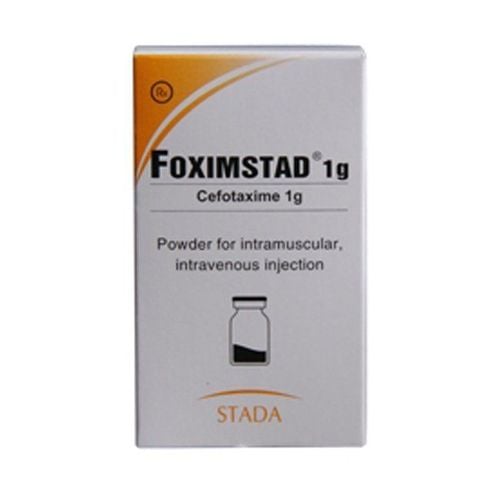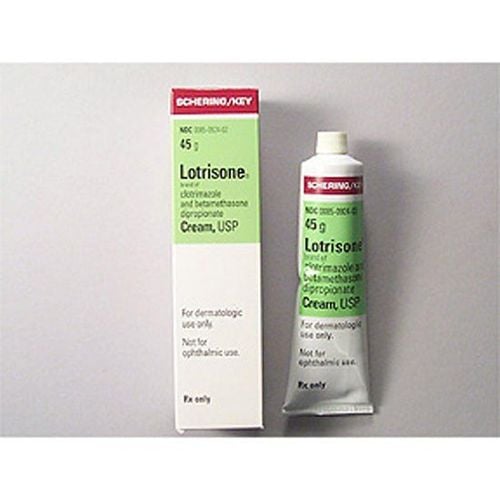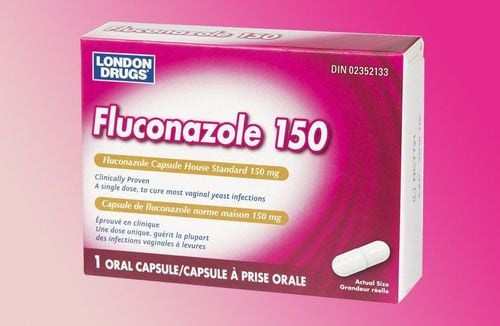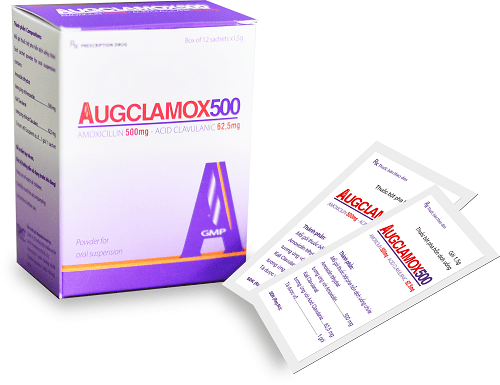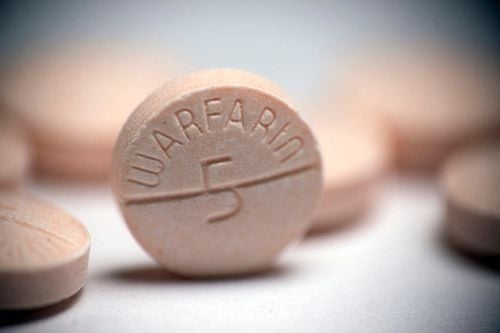This is an automatically translated article.
Cefdina 250 is mainly used to treat mild to moderate bacterial infections, such as sinusitis, bronchitis, skin infections,... During the use of Cefdina 250 , patients need to make sure to follow the doctor's instructions properly to ensure safety and high efficiency.
1. What is Cefdina 250?
Cefdina 250 belongs to the group of antifungal, antiviral, antiparasitic and anti-infective drugs. Cefdina 250 is a product of Ha Tay Pharmaceutical Joint Stock Company - Vietnam, prepared in the form of a powder pack for oral suspension, each pack has a content of 3g and a box of 30 packs.
Cefdina 250 is commonly used to treat mild to moderate bacterial infections. Knowing the information about Cefdina 250 can help patients use the drug safely and effectively.
In each package of Cefdina 250 powder includes the following main pharmaceutical ingredients:
Main active ingredient: Cefdinir 250mg. Other excipients: Orange flavor powder, fruit flavor, white sugar, Aspartame, Microcrystalline cellulose, Sodium carboxymethyl cellulose and Colloidal silicon dioxide. The main active ingredient Cefdinir in the drug Cefdina 250 acts as a semi-synthetic antibiotic belonging to the 3rd generation Cephalosporin group. This pharmaceutical ingredient has the ability to kill bacteria based on the mechanism of blocking and inhibiting cell synthesis. bacteria cell.
According to research, the active ingredient Cefdinir is rich in beta-lactamase enzymes, which are formed by gram-positive and gram-negative bacteria. Certain types of bacteria are susceptible to Cefdinir, including:
Gram-positive aerobic bacteria such as Streptococcus pneumonia, Staphylococcus aureus or Streptococcus pyogenes. Gram-negative aerobic bacteria such as Haemophilus parainfluenzae, Haemophilus influenzae or Moraxella catarrhalis. Gram-positive anaerobes such as Viridan streptococci, Streptococcus agalactiae or Staphylococcus epidermidis. Gram-negative anaerobes such as Proteus mirabilis, Citrobacter diversus, Klebsiella pneumoniae or Escherichia coli.
2. Indications and contraindications for taking Cefdina 250
2.1. Indications for use of Cefdina 250 Cefdina 250 is usually prescribed by doctors to treat the following mild and moderate bacterial infections:
Upper respiratory tract infections, such as sinusitis, tonsillitis, rhinitis , otitis media or pharyngitis. Lower respiratory tract infections, such as bronchitis, pneumonia, laryngitis, tracheitis, or bronchiolitis. Uncomplicated skin/skin structure infections, such as periungitis, folliculitis, macular degeneration, impetigo, boils, or subcutaneous abscesses. Used in the prevention of infection for patients who have just undergone surgery. Treatment of mild to moderate infections in obstetrics and gynecology. Treatment of genital or urinary tract infections. Treatment of gonorrhea has no complications. 2.2. Contraindications to the use of Cefdina 250 Do not use Cefdina 250 for patients with a history or hypersensitivity reaction to the active ingredient Cefdinir as well as other antibiotics of the Penicillin and Cephalosporin groups.
3. Dosage and instructions for taking Cefdina 250
3.1. Recommended Dosage of Cefdina 250 The total recommended daily dose for all patients with bacterial infections is 14mg/kg, the maximum dose of Cefdinir is 600mg/day. According to the doctor, a dose of Cefdinir once a day for 10 days can bring about the same effect as taking a dose twice a day. For skin infections, patients should take the drug twice a day.
*Dosage for children from 6-12 months old:
Treatment of acute otitis media: Oral 7mg/kg every 12 hours for 5 to 10 days, or 14mg/kg orally every 24 hours for 10 days. Treatment of pharyngitis/tonsillitis: Orally 7mg/kg every 12 hours for 5 – 10 days, or 14mg/kg every 24 hours for 10 days. Treatment of acute sinusitis: Oral 7mg/kg every 12 hours or 14mg/kg every 24 hours for 10 days. Treatment of uncomplicated dermatomyositis/dermatitis: Oral 7mg/kg every 12 hours for 10 days. *Dosage for patients with renal impairment (clearance less than 30ml/min):
For adults: Oral dose should not exceed 300mg/day. For children: Take 7mg/kg/day, not to exceed 300mg/day. For patients on hemodialysis: Take 7mg/kg/day. 3.2. Instructions for proper use of Cefdina 250 Add about 60ml of water to the powder, then stir until a homogeneous suspension is formed. After mixing the medicine, you can store it in the refrigerator and use this suspension within 7 days. Remember to always shake the reconstituted suspension well before use. In addition, Cefdina 250 does not affect the stomach, so patients can take it before or after meals.
3.3. Management of overdose of Cefdina 250 In the case of overdose of Cefdina 250, patients may experience symptoms of beta antibiotic toxicity, such as epigastric pain, nausea, vomiting, and cramps. convulsions, diarrhea,... When these overdose reactions occur, the patient should quickly notify the doctor to find a way to overcome it soon.
4. Possible side effects when using Cefdina 250
Like most modern medicines, Cefdina 250 also carries the risk of unwanted side effects for patients in certain cases, including:
Headache. Nausea. Redness or rash. Abdominal pain of unknown location. Diarrhea . In addition to the above side effects, some patients may also experience other symptoms not mentioned. On the other hand, the severity of side effects depends on many factors, especially the patient's condition.
5. Things to note in the process of using Cefdina 250
5.1. What precautions should be taken while using Cefdina 250? Before and during the use of Cefdina 250, patients should take the following precautions to ensure safety and effectiveness:
Maintenance dose of Cefdina 250 may lead to a number of problems, such as: The most obvious is the development of drug-resistant bacteria. Cefdina 250 should be used with caution in patients with a history of colon diseases, especially colitis. Reduce the dose of Cefdina 250 in patients with renal failure with creatinine clearance < 30 ml/min. Cefdina 250 should be used with caution in pregnant or lactating women. Ideally, if using Cefdina 250, these subjects should be closely monitored by a doctor to ensure safety. Cefdina 250 should not be used in children under 6 months of age because the safety of the drug has not been reported. When an allergic reaction occurs, the patient should stop using Cefdina 250 immediately. 5.2. Interactions of Cefdina 250 with other drugs Interactions between drugs can affect how medicines work and even increase the risk of serious side effects. To help prevent this, patients should tell their doctor about any medications they are taking so that they can advise on the correct modification or replacement.
The following are drugs that may interact with Cefdina 250:
Iron containing drugs or antacids when taken together with Cefdina 250 can reduce the absorption of Cefdinir active ingredient into the body. If it is necessary to take these drugs together, patients should take them at least 2 hours apart. Probenecid used with Cefdina 250 may adversely affect the renal excretion of Cefdinir. This easily increases the risk of unnecessary drug accumulation in the body. Above is information about the uses, dosage and precautions when using Cefdina 250. To ensure safety for your health and maximize the effectiveness of your treatment, you need to take Zincap 500 exactly as directed by your doctor.
Please dial HOTLINE for more information or register for an appointment HERE. Download MyVinmec app to make appointments faster and to manage your bookings easily.




